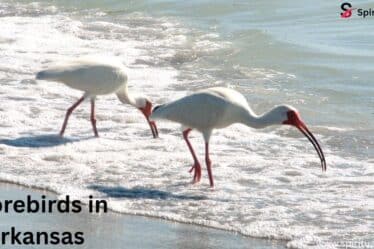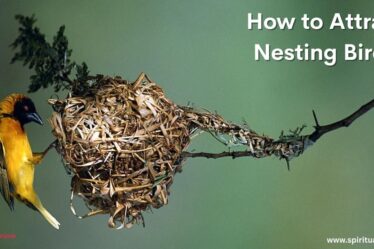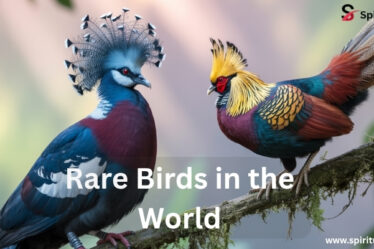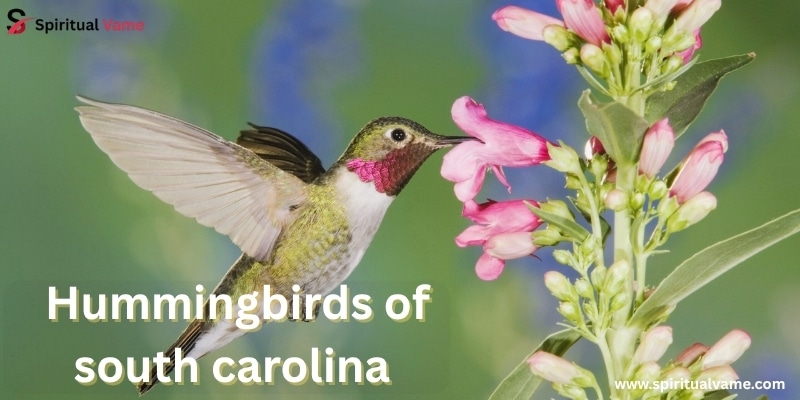
Hummingbirds of South Carolina are some of the most colorful and exciting birds to see. These tiny birds have fast wings, bright feathers, and a love for sweet nectar. In spring and summer, the hummingbirds of South Carolina fill gardens and parks across the state. You can spot them in places like Myrtle Beach, Charleston, and Lake Murray.
People enjoy watching the hummingbirds of South Carolina because they are fun and full of energy. From common species like the Ruby-throated to rare visitors, they bring beauty wherever they go. This guide will help you learn about the different types, where to find them, and how to attract them to your backyard.
1. Ruby-Throated Hummingbird
The Ruby-throated Hummingbird (Archilochus colubris) is the most common species found in South Carolina. With a body length of about 3.1-4.3 in and weight between 2-6 g, it’s small but full of energy. Males are easy to spot with their iridescent red throat and shiny green back. Females don’t have the red throat but share the same fast-paced flying style. You’ll often see these birds zipping around tubular flowers like trumpet creepers, honeysuckle, and petunias, or drinking from feeders filled with a sugar-water solution made from 1/4 cup of sugar and 1 cup of water.
They’re excellent pollinators and play a crucial role in maintaining biodiversity and supporting the ecosystem. Their metabolism is one of the fastest among birds, so they’re constantly on the lookout for nectar, insects, and spiders to fuel their activity. You might also catch them performing aerial acrobatics during the breeding season, or building nests from spider silk, plant down, lichen, and moss to keep their 1-3 eggs safe and hidden with perfect camouflage.
2. Rufous Hummingbird
The Rufous Hummingbird (Selasphorus rufus) is known for its fiery personality and coppery-orange coloring. Though they are more commonly seen in the western parts of North America, many find their way to South Carolina during migration. They usually appear in late fall and early winter, sometimes lingering into early spring, especially in coastal areas like Myrtle Beach. These tiny birds measure around 3-3.75 in and weigh about 0.1-0.2 oz. They may be small, but they’re fierce when it comes to protecting their food sources.
This species travels farther than almost any other hummingbird—some migrating more than 1600 km from British Columbia to the southern United States. Despite their small size, they handle the cold surprisingly well, which helps them expand their wintering grounds. Their aggressive nature makes them easy to spot at feeders where they often chase away other birds. Adding bee balms, trumpet vines, and other nectar-rich plants to your yard can give them the energy they need during their long journey and encourage more sightings for local observers.
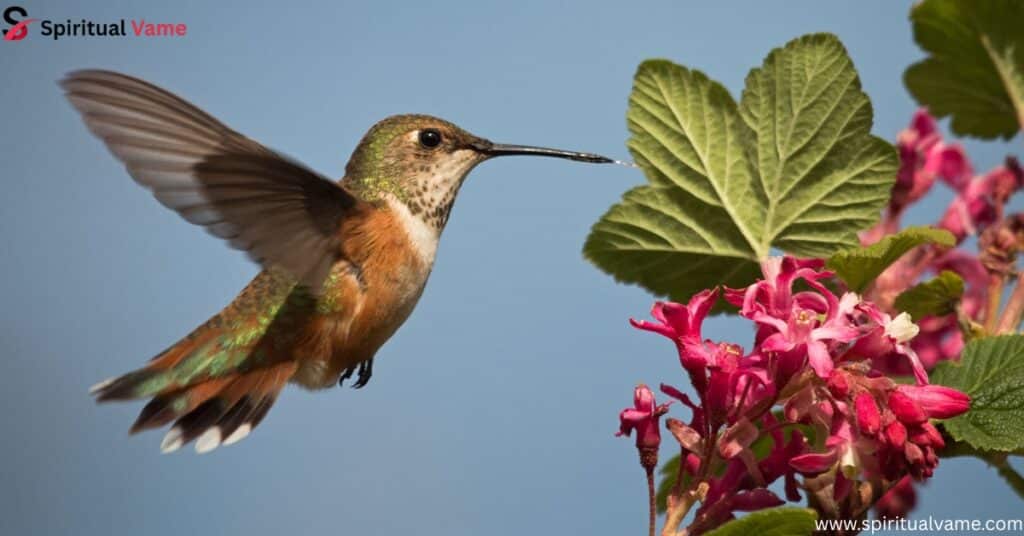
3. Black-Chinned Hummingbird
The Black-Chinned Hummingbird (Archilochus alexandri) is a rarer visitor to South Carolina, but they do make appearances from time to time. These birds have a body length of 3.75 in and weigh roughly 0.1-0.1 oz. Males feature a shimmering purple-black throat, which flashes in the sunlight when they tilt their head. Their call and wing sounds are distinct, making them easier to recognize even before you see them.
They’re typically found along rivers, streams, and open woodlands, where they can search for small insects and nectar to maintain their high metabolism. If you live near a natural water source, you might have more luck spotting this species. They’re less aggressive than the Rufous Hummingbird, but they still defend their space during the breeding season. Since they’re not as commonly seen in the east, reporting sightings helps scientists track their expanding migratory routes as part of habitat preservation efforts.
4. Broad-Tailed Hummingbird
The Broad-Tailed Hummingbird (Selasphorus platycercus) is another species you might come across, especially in the upstate regions or mountainous areas of South Carolina. These birds are about 4-4.5 in long and weigh between 2-4 gm. The male is known for a sharp trilling sound created by air rushing through his tail feathers, a sound you may hear even if the bird itself is hard to spot.
Although more common in the western United States, Broad-Tailed Hummingbirds do show up as rare visitors in South Carolina, particularly during migration. They prefer open woodlands and forest edges where nectar is easy to access. These birds are well adapted to cooler temperatures and may visit higher elevations before returning to their wintering grounds in Central America. Gardeners hoping to spot one should plant brightly colored flowers and avoid using pesticides, which can harm the insects that hummingbirds rely on for protein.
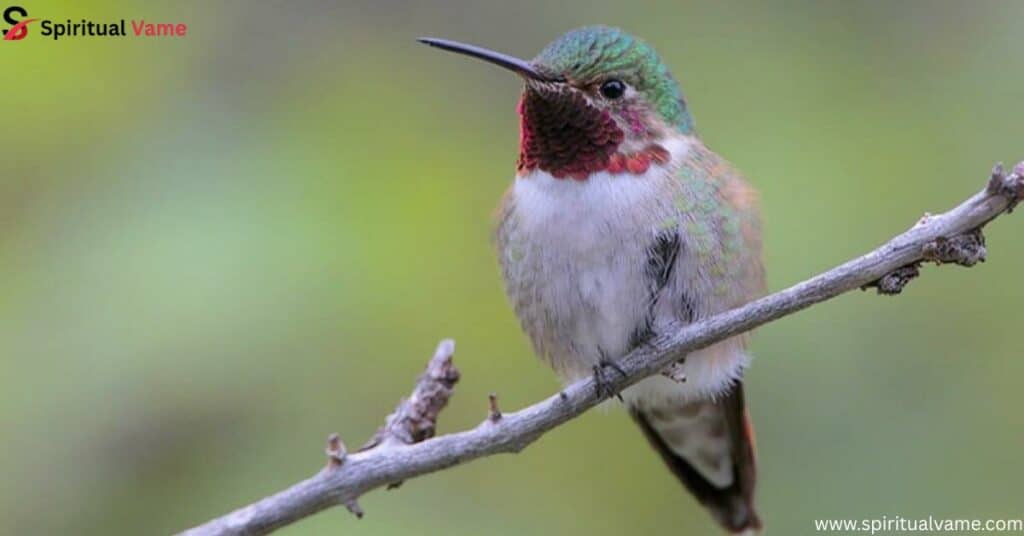
Where to look for Hummingbirds in South Carolina
South Carolina offers several prime locations to see hummingbirds in action. Areas like Charleston, Lake Murray, and Myrtle Beach are known for their rich natural landscapes, making them hotspots for these birds. Whether you’re walking through a local Audubon preserve or relaxing in your backyard, you’re likely to catch a glimpse during migration seasons. Natural areas filled with deciduous trees, tubular flowers, and running water are ideal. Even small gardens with trumpet creepers, bee balms, and honeysuckle can attract these energetic creatures.
Keep an eye out from early spring to late fall, as hummingbirds are most active during this period. The key is creating a welcoming space—add a few feeders, make sure they’re clean, and avoid artificial dyes in your sugar-water solution. You’ll also increase your chances by planting native blooms that produce high amounts of nectar. Patience is important. Often, once one hummingbird finds a spot it likes, more will follow, turning your garden into a hummingbird haven.
10 Types species of Hummingbirds in South Carolina:
Ruby-throated hummingbird (Archilochus colubris): The most common species, known for its shiny green back and red throat. Found in gardens and woodlands, it measures about 3.1-4.3 in and weighs 2-6 g.
Black-Chinned Hummingbird (Archilochus alexandri): Rare but beautiful, with a black-purple throat. Found near rivers and woodlands. Size: 3.75 in, 0.1-0.1 oz.
Buff-bellied Hummingbird (Amazilia yucatanensis): A green-and-copper beauty, sometimes seen along the Gulf Coast. Larger, around 4.3 in long.
Rufous Hummingbird (Selasphorus rufus): Known for its feisty nature and orange color. Migrates long distances—up to 1600 km.
Anna’s Hummingbird (Calypte anna): Adapted to colder climates, with a bright pink crown. Often seen in urban spaces and coastal regions.
Calliope Hummingbird (Selasphorus calliope): The smallest bird in the U.S., only 2.8-3.5 in long. Known for its compact size and bravery.
Broad-tailed Hummingbird (Selasphorus platycercus): Loves cooler climates, high elevations, and sings with its tail. Measures around 4-4.5 in.
Allen’s Hummingbird (Selasphorus sasin): Looks like the Rufous but slightly smaller and more delicate. Migrates along the Pacific Coast.
Blue-throated Mountaingem (Lampornis clemenciae): One of the largest species, with a brilliant blue throat and strong flight pattern.
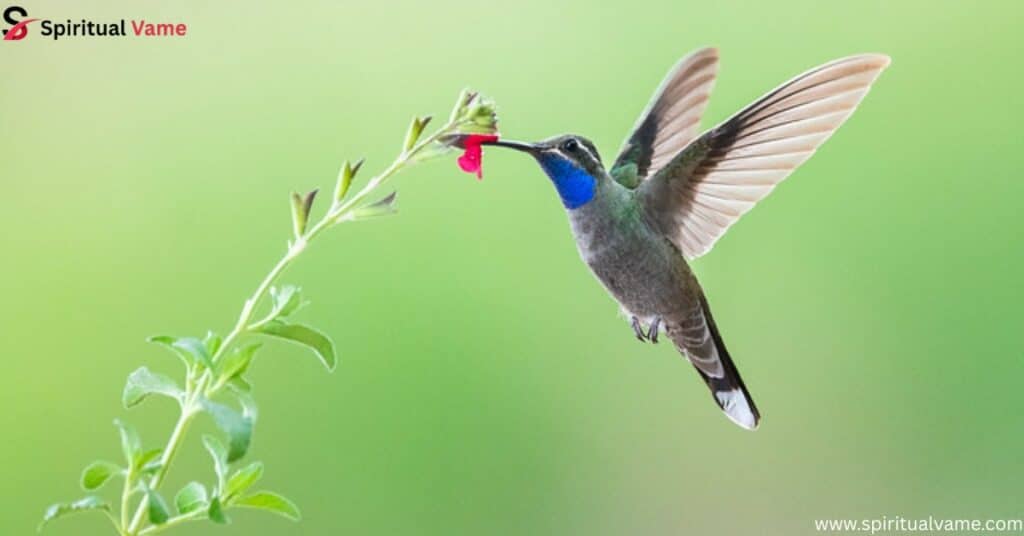
Broad-Billed Hummingbird (Cynanthus latirostris): With a vivid blue-green body and bright red bill, it’s a standout among hummingbirds in the east.
Hummingbirds in South Carolina 2025
When hummingbirds arrive in South Carolina
Every spring, around March to early April, the hummingbirds make their long journey back to South Carolina from their wintering grounds in Mexico and Central America. As they cross the Gulf of Mexico, sometimes flying 500 miles without stopping, they arrive hungry and ready to feed. Warmer weather, longer days, and blooming flowers signal the start of their breeding season, making this the perfect time to set up feeders.
When hummingbirds leave South Carolina
As the weather cools in late September through October, most hummingbirds begin their southward migration. The Ruby-throated Hummingbird, in particular, prepares for the long flight back across the Gulf. You may notice a feeding frenzy as they bulk up for the trip. Some rare visitors, like the Rufous and Buff-bellied Hummingbirds, may stay into the winter, especially near the coast.
Attracting hummingbirds
If you want to attract these amazing birds, keep it simple. Offer fresh nectar made with 1/4 cup of sugar and 1 cup of water—no red dye. Clean your feeders every few days to prevent mold. Planting tubular flowers like bee balms, petunias, and trumpet creepers will help draw them in naturally. Avoid chemicals in your garden to protect their insects and spider food sources. Add a water feature, offer shade, and give them a safe place to rest—and you’ll be rewarded with visits from some of nature’s most beautiful and hard-working creatures.
Conclusion
The hummingbirds of South Carolina bring unmatched beauty and energy to the state’s gardens, forests, and urban spaces. From the widely seen Ruby-throated Hummingbird (Archilochus colubris) to rare visitors like the Broad-Billed Hummingbird (Cynanthus latirostris), each species plays a vital role in pollination, supporting the state’s biodiversity. Their shimmering iridescent plumage, swift wingbeats, and skillful hovering make them a favorite among birdwatchers, enthusiasts, and nature lovers across the Palmetto State.
These tiny birds, often weighing just 2-6 gm and measuring only 3.1-4.3 in, undertake massive migrations from places like Mexico, Central America, and along the Pacific Coast, covering up to 1600 km. Whether you’re near Myrtle Beach, exploring woodlands by a river or stream, or simply enjoying your backyard in Charleston, spotting a hummingbird is always a magical experience. Encouraging their visits through feeders, nectar-rich flowers, and support for habitat preservation not only helps these remarkable creatures thrive but also keeps South Carolina’s natural world vibrant and alive.

